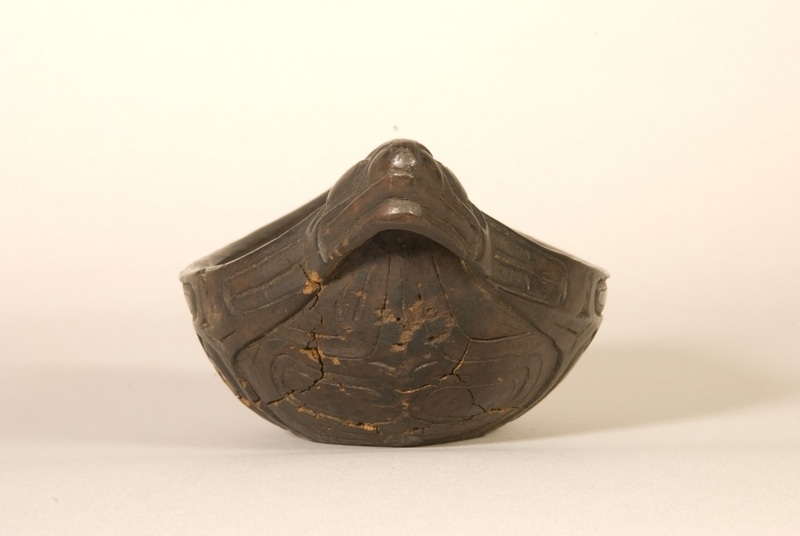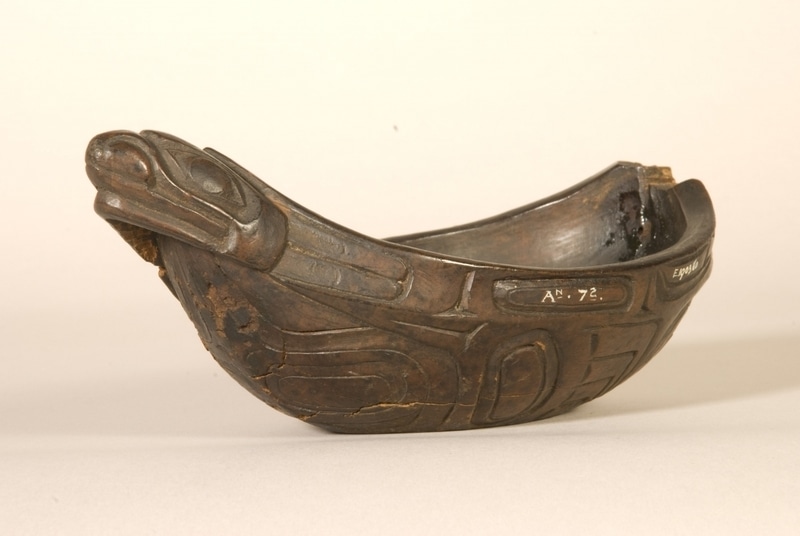Dish Item Number: E 1903.60 from the MAA: University of Cambridge




Description
A grease dish carved into the shape of a seal, with the head projecting beyond the body of the dish, unfortunately the tail has been broken off. The seal is carved in the configurative style with its front flippers clearly visible on the side of the dish. The entire outside of the dish is carved with ovoids and U-forms, comprising the seal' s body. The outside of the dish is badly cracked, but the inside is intact. The inside of the dish has a noticeable ridge running round the bottom and bifurcating at either end to join the rim of the dish. There is also some traces of the grease at both ends of the bowl. The ridge may possibly be a vestige of birch bark precursors (G.Crowther).; Good
Context
The original European tribal names and, where possible, current tribal names have both been given in separate GLT fields.; Grease dishes often have more easily identifiable creatures, carved in the configurative style. I have distinguished them from bowls due to this ease of identification, but must also note that some bowls were also used for grease. It is possible the ease of identification reduced the exchange potential of the object. The grease dishes were used for oolichan and seal grease into which food was dipped during feasts and potlatches. Similar to spoons and bowls the use of objects decorated with crests demarcated potlatches and feasts as events removed from everyday existence.The crests carved on objects were possibly those of the owner representing a tangible connection between the lineage and the economic resources consumed during the feasting (G.Crowther).
Item History
- Made in British Columbia, Canada
- Received from Anatole von Hgel during 1903
Who
- Culture
- Northwest Coast
- Received from
- Anatole von Hgel
Where
- Holding Institution
- MAA: University of Cambridge
- Made in
- British Columbia, Canada
When
- Acquisition Date
- during 1903
Other
- Keyword
- Food Preparation; Ceremonial Objects; containers